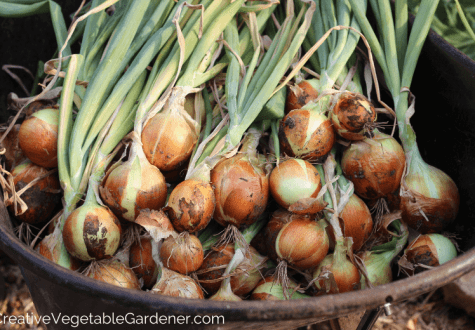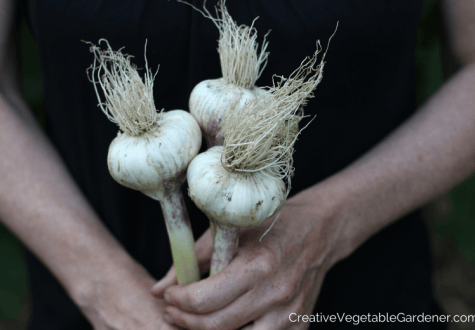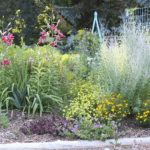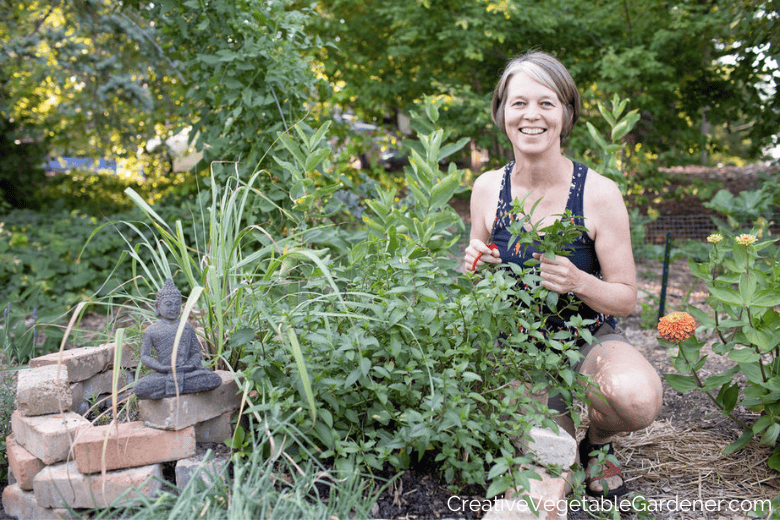
Yum, mint! It’s one of my favorite flavors. Mint chocolate chip ice cream! York peppermint patties! True confession: I have a cup of mint tea every morning, all year round. If you love it, too, the good news is that growing any of the mint varieties is really easy. The bad news is that it can be a little too easy because mint can quickly take over your entire garden. (More about that later!)
Let’s get back to the good news, though. Mint is incredibly cold hardy, so it’s perfect for cold climates. I live in zone 5 a/b in Wisconsin and my mint returns to the same spot each year without fail. Most mints grow well down to zone 3, although sometimes specialty varieties aren’t as cold tolerant as the more mainstream ones.
Mint is generally a low growing plant. Most varieties grow to a height of 1-3 feet tall. Pollinators love the white and lavender flowers of mint plants, so you can let some of your crop go to seed if you’d like. They spread more by rhizomes than seeds, so you don’t have to worry about the flowers.
I recommend planting your mint by plant, not by seed. The best way to choose your favorite variety is to take a trip to your local farmers market or garden nursery and use your nose to help you decide which mint you want to grow in your garden.
Since mint is such a vigorous grower, you don’t really need more than one plant, unless you have your heart set on trying several kinds.
When you’re out shopping, keep an eye out for some of these fun mint varieties.
Spearmint
Along with peppermint, this is one of the most popular mints to grow in the home garden. The leaves are a lighter green color than peppermint and it has a slightly more sweet and mild mint flavor.
Peppermint
This is my favorite mint and the one I grow in my garden. The taste is stronger than spearmint, the leave are a darker green and the stems are reddish. It’s the perfect choice if you’re a mint lover like me!
Chocolate Mint
One of my absolute favorite flavor combinations is chocolate and mint! I often buy one pint of chocolate ice cream and one pint of mint chocolate chip and mix them together in the same bowl for dessert.
Pineapple Mint
This tropical smelling plant is a beautiful addition to the garden due to it’s white, yellow and green variegated leaves. I personally love unique looking herbs and can’t resist purchasing them at the local nursery to try out in my garden.
Apple Mint
Tear up the leaves and add them to iced tea on a hot day!
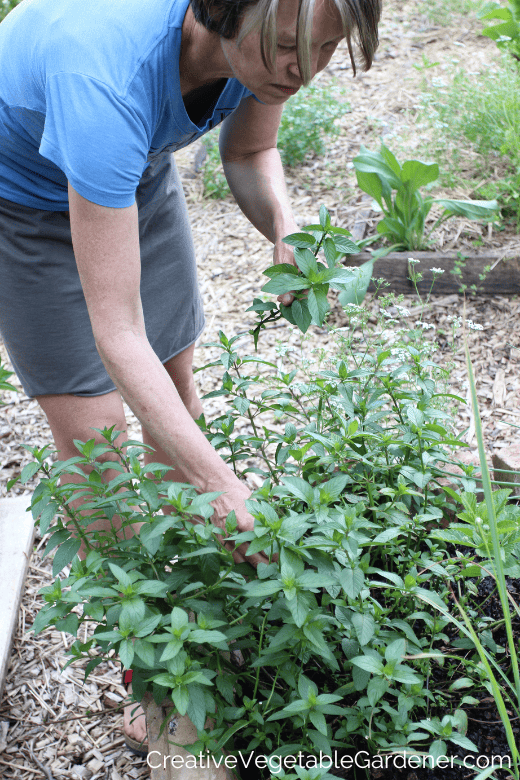
Harvesting Mint
Mint is a perennial plant and very cold tolerant, so you’ll see it start to put on new growth early in spring. In my garden in zone 5a/b, my mint starts to green up in April. It will also survive the first frosts in fall, so you’ll be able to harvest it for quite a long time throughout the season.
Harvesting mint is pretty straightforward. It’s a pretty tough plant, so just grab a pair of clippers or scissors, go out to your mint plant, and cut off as much as you’d like. It grows back very easily and quickly. You can cut the plant down to half or a third if you want. You’re not going to hurt it.
Sometime during the summer the mint will start to flower. If you want to continue to harvest the mint you can cut back the flowers to encourage it to keep to producing leaves. If you like to feed the beneficial insects in your garden, you could let some of it go to flower for them. But remember, once an herb flowers, sometimes the leaves turn bitter.
Because all mint varieties produce such an aggressive plant, don’t be afraid to beat it back periodically and rip out sections of the plant if it starts to spread somewhere you don’t want it. Mint spreads by rhizome, so it’s best to dig out as many of them as possible.
Be careful about where you put these trimmings. If you’re not going to use them for cooking or preserving, don’t put them right into your compost bin because they could set down roots and take over the area.
Instead, set them somewhere out in the sun so they dry up and die before you put them in into your compost. I lay mine out on our blacktop driveway for a few days.
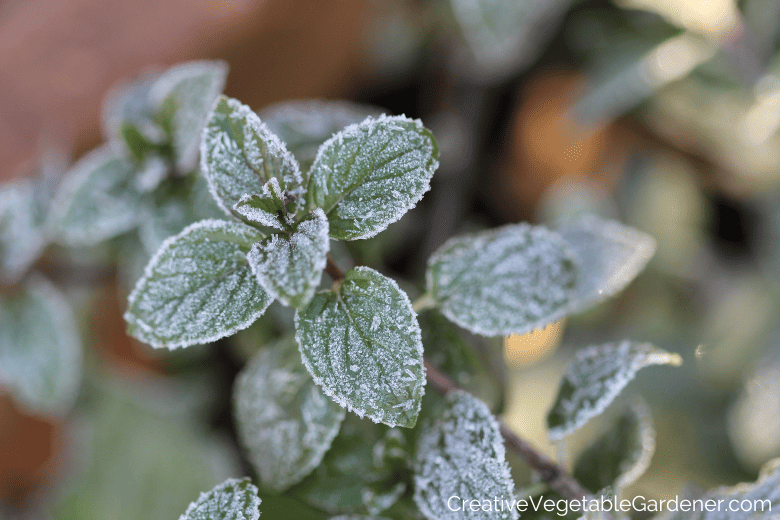
How to Store Mint
I recommend harvesting herbs fresh right before you need them. There’s not really any reason to store your mint varieties anywhere but out in your garden. But, when necessary, mint will store well in your fridge for a few days. You can put it in a plastic bag and place it in one of the crisper drawers. You can also put it in a container of water on your counter and cover it with a plastic bag.
What to Do with Too Much Mint
It’s easy to grow more mint than you can possibly eat. When this happens, I usually try to find summer recipes that highlight this delicious herb. Below are some of my favorites.
Cooking & Recipes
Mint has a pretty strong taste, so most recipes only call for a small amount of it. A lot of the recipes that feature mint are Middle Eastern or Mediterranean. I recently made the below Mediterranean quinoa salad and brought it camping. If you like eating falafel and tabouli, mint is often a common ingredient in those recipes, and spring rolls often feature fresh mint.
Mediterranean Quinoa Salad with Roasted Summer Vegetables
Summer Rolls with Spicy Peanut Sauce
Drinks
Mint is a very common ingredient in teas and mixed drinks.
Hot Mint Tea—cut a sprig, put it in your mug, and pour boiling water over it for an instant cup of tea.
Iced Mint Tea: If you like iced mint tea, there are actually two different ways you can make it. The first one is to harvest a few sprigs of mint and then select your container. I use half gallon canning jars. Bring water to a boil and then pour it into the jar over the mint springs. You can leave it out on the counter until it cools. Remove the mint and put the jar in the fridge to cool it down. Optional: add honey or sugar when hot for a little sweetener.
Sun Tea: The second way is to make sun tea. Harvest a few sprigs of your mint varieties, select a container, fill it with cool water, and let it sit out in the sun for a couple of days until it gets a nice minty flavor. Optional: add honey or sugar when warm for a little sweetener.
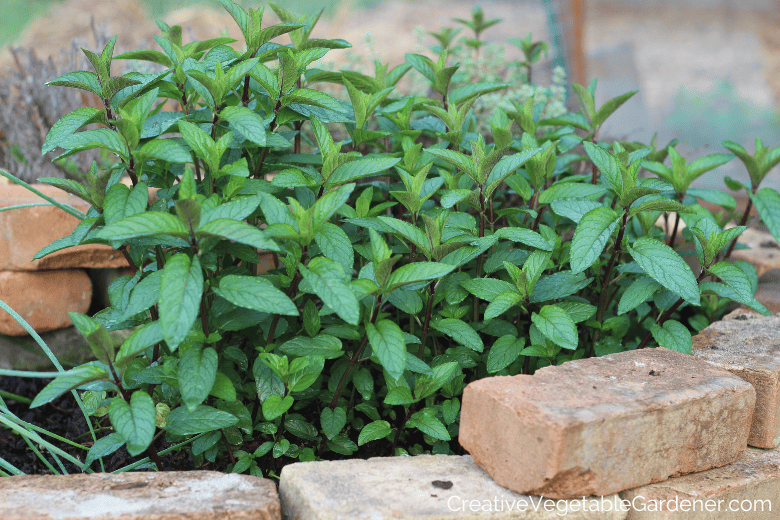
Preserving Mint
Mint is best dried for later use.
My lazy way of drying herbs is to throw them in a paper bag and hang it somewhere that gets plenty of air circulation. You can also spread them out on a screen to dry in a darker area, not in direct sunlight.
Or, tie them in bundles and hang them up to look pretty in your kitchen!
When you’re drying herbs, wait until they’re very brittle and dried out before putting them into a container. They should crumble easily and not have any moisture left in the leaves. Remove any of the stems or other parts of the plant you don’t want and put the rest in an airtight container.
I dry a lot of mint, so I use wide mouth quart canning jars. I try to put up three or four quart jars full of dried mint for the winter because I drink a lot of tea.

A final word about mint…
Before you plant mint in your garden, I want to reiterate that it can be very invasive. If you’re not careful, it can take over your entire garden. For that reason, I usually recommend not planting mint directly into your garden bed.
Because it’s so hardy, you can grow it in a container. That’s what I did for the first few years I grew mint, but then I realized I wasn’t getting as much mint as I wanted, so I hesitantly planted it in my herb spiral. That’s a pretty contained area, so I thought that would help me keep it in check. It’s gone pretty well so far, although it does spread into the other herbs, so I have to yank it back periodically.
I would suggest trying to grow it in a pot first and see how that works for you. You can put it on your patio or deck or somewhere in or around your garden. Some people also plant it in a pot and then dig a hole and sink the pot into one of their garden beds in an attempt to contain the roots a bit better. This has the added benefit of not having to water a pot so often.
Overall, there’s nothing to be scared of when it comes to growing mint! It really is one of my favorite herbs to grow and there are so many fun mint varieties. As long as you keep an eye on it and don’t let it take over your entire garden, you’ll have many years of bountiful mint harvests ahead of you.
SHARE IT ON PINTEREST


